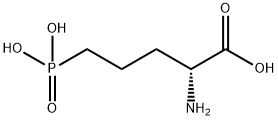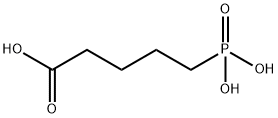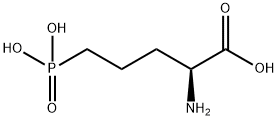D-AP5
Synonym(s):D (−)-AP-5;D (−)-APV;D -2-Amino-5-phosphonovaleric acid;D-(–)-2-Amino-5-phosphonopentanoic Acid - CAS 79055-68-8 - Calbiochem;D-AP5, NMDA Antagonist II, APV, D-APV, 2-APV, D-2-amino-5-phosphonovalerate
- CAS NO.:79055-68-8
- Empirical Formula: C5H12NO5P
- Molecular Weight: 197.13
- MDL number: MFCD00078839
- SAFETY DATA SHEET (SDS)
- Update Date: 2024-11-19 20:33:22

What is D-AP5?
Description
D-
Chemical properties
white fine crystalline powder
The Uses of D-AP5
A competitive NMDA antagonist
What are the applications of Application
D(?)-2-Amino-5-phosphonovaleric acid (D-AP5) is a selective antagonist of the NMDA receptor
General Description
Active enantiomer of DL-2-amino-5-phosphonopentanoic acid (AP5) that is a commonly used competitive NMDA receptor antagonist.
Biological Activity
Widely used competitive NMDA antagonist. More active form of AP5. Also agonist at quisqualate-sensitized AP6 site where it is less potent than the L-isomer (L-(+)-2-Amino-5-phosphonopentanoic acid ). Also available as part of the Mixed NMDA Receptor Tocriset™ .
Biochem/physiol Actions
Product does not compete with ATP.
storage
Room temperature
Properties of D-AP5
| Melting point: | approximate 233℃ |
| Boiling point: | 482.1±55.0 °C(Predicted) |
| Density | 1.529±0.06 g/cm3(Predicted) |
| RTECS | RD2513000 |
| storage temp. | Store at RT |
| solubility | Soluble to 100 mM in sterile |
| pka | 2.46±0.10(Predicted) |
| form | White solid |
| color | White |
| Water Solubility | Soluble in water (100mM) |
| Sensitive | Light Sensitive |
Safety information for D-AP5
| Signal word | Warning |
| Pictogram(s) |
 Exclamation Mark Irritant GHS07 |
| GHS Hazard Statements |
H315:Skin corrosion/irritation H319:Serious eye damage/eye irritation H335:Specific target organ toxicity, single exposure;Respiratory tract irritation |
| Precautionary Statement Codes |
P261:Avoid breathing dust/fume/gas/mist/vapours/spray. P304+P340:IF INHALED: Remove victim to fresh air and Keep at rest in a position comfortable for breathing. P305+P351+P338:IF IN EYES: Rinse cautiously with water for several minutes. Remove contact lenses, if present and easy to do. Continuerinsing. P405:Store locked up. |
Computed Descriptors for D-AP5
New Products
4-Fluorophenylacetic acid 4-Methylphenylacetic acid N-Boc-D-alaninol N-BOC-D/L-ALANINOL Tert-butyl bis(2-chloroethyl)carbamate 3-Morpholino-1-(4-nitrophenyl)-5,6-dihydropyridin- 2(1H)-one Furan-2,5-Dicarboxylic Acid Tropic acid S-2-CHLORO PROPIONIC ACID ETHYL ISOCYANOACETATE 2-Bromo-1,3-Bis(Dimethylamino)Trimethinium Hexafluorophosphate (6-METHYL-[1,3]DITHIOLO[4,5-b]QUINOXALIN-2-ONE INDAZOLE-3-CARBOXYLIC ACID 4-IODO BENZOIC ACID (2-Hydroxyphenyl)acetonitrile 4-Bromopyrazole 5,6-Dimethoxyindanone 2-(Cyanocyclohexyl)acetic acid 4-methoxy-3,5-dinitropyridine 2-aminopropyl benzoate hydrochloride 1-(4-(aminomethyl)benzyl)urea hydrochloride diethyl 2-(2-((tertbutoxycarbonyl)amino) ethyl)malonate tert-butyl 4- (ureidomethyl)benzylcarbamate Ethyl-2-chloro((4-methoxyphenyl)hydrazono)acetateRelated products of tetrahydrofuran




![D(-)-2-AMINO-5-PHOSPHONO-PENTANOIC ACID, [4,5-3H]](https://img.chemicalbook.in/StructureFile/ChemBookStructure3/GIF/CB7143117.gif)



You may like
-
 (R)-(-)-2-Amino-5-phosphonopentanoic acid CAS 79055-68-8View Details
(R)-(-)-2-Amino-5-phosphonopentanoic acid CAS 79055-68-8View Details
79055-68-8 -
 D-(–)-2-Amino-5-phosphonopentanoic Acid CAS 79055-68-8View Details
D-(–)-2-Amino-5-phosphonopentanoic Acid CAS 79055-68-8View Details
79055-68-8 -
 D(−)-2-Amino-5-phosphonopentanoic acid CAS 79055-68-8View Details
D(−)-2-Amino-5-phosphonopentanoic acid CAS 79055-68-8View Details
79055-68-8 -
 1975-50-4 98%View Details
1975-50-4 98%View Details
1975-50-4 -
 2-HYDROXY BENZYL ALCOHOL 98%View Details
2-HYDROXY BENZYL ALCOHOL 98%View Details
90-01-7 -
 2-Chloro-1,3-Bis(Dimethylamino)Trimethinium Hexafluorophosphate 221615-75-4 98%View Details
2-Chloro-1,3-Bis(Dimethylamino)Trimethinium Hexafluorophosphate 221615-75-4 98%View Details
221615-75-4 -
 14714-50-2 (2-Hydroxyphenyl)acetonitrile 98+View Details
14714-50-2 (2-Hydroxyphenyl)acetonitrile 98+View Details
14714-50-2 -
 118753-70-1 98+View Details
118753-70-1 98+View Details
118753-70-1